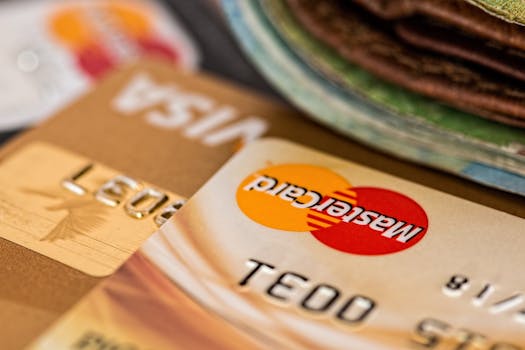In the evolving landscape of personal finance, understanding various payment methods is crucial for effective money management. Many people are faced with the daily question of whether to use cash, cards, or credit. Each option has unique aspects that can significantly affect financial habits and spending choices.
Our spending choices not only reflect our preferences but also influence our financial health. Learning the implications of each payment method enables consumers to make informed decisions based on their lifestyles and financial goals. This article examines the benefits and drawbacks of cash, card, and credit, offering insights into how each method impacts spending behavior.
By distinguishing the nuances of these payment methods, individuals can effectively tailor their spending habits. A deeper understanding can lead to smarter financial decisions while fostering a healthier relationship with money. Let’s dive into the specifics of each option to illustrate their roles in daily financial management.
Cash: The Tangible Choice
Cash has been a staple of transactions for centuries. Its tangibility offers users a clear sense of their available funds. Consequently, many people find that handling cash can help them control their spending more effectively.
Using cash encourages participants to be mindful of their purchases. When individuals physically hand over money, the act can create a more profound awareness of their financial limitations. As a result, people often spend less when using cash than when swiping a card.
Moreover, cash does not incur the risks associated with credit or fraud. Users can complete transactions without worrying about identity theft or overdraft charges. This straightforward approach to spending helps many individuals feel secure in their financial decisions.
However, cash does have some disadvantages. It lacks the convenience and trackability offered by digital payment methods. Moreover, people may find themselves unprepared for larger purchases that require more than what they have on hand.
Lastly, as electronic payment methods gain popularity, cash transactions can become less convenient in some scenarios. Some businesses prefer cashless transactions, prompting users to adapt and become agile in their payment choices.
Cards: The Balanced Solution
Cards have become a popular method of payment due to their convenience. They allow users to make transactions without physically carrying cash. Options include debit and prepaid cards, which facilitate easy spending management.
Debit cards often link directly to a bank account, providing a direct representation of available funds. This feature allows individuals to control spending effectively without straying into debt. Tracking and managing finances is easier with digital statements.
Moreover, credit cards provide benefits such as rewards, cashback, and the ability to build credit history. Responsible usage can lead to improved credit scores, which may positively impact future financial decisions. When used wisely, credit cards can benefit long-term financial stability.
On the flip side, credit cards can also contribute to overspending. The allure of “buy now, pay later” may encourage impulsive purchases, leading to debt accumulation. It’s essential for users to practice discipline to prevent falling into this trap.
Furthermore, fees associated with credit cards can compound if the balance isn’t paid in full each month. Understanding interest rates and late fees is crucial for users to maximize the benefits while avoiding pitfalls.
Credit: Building Financial Futures
Credit is a financial tool that allows individuals to borrow funds with the promise of future payment. It plays a vital role in personal finance, enabling people to make larger purchases, invest in education, or manage emergencies. However, understanding its implications is crucial for effective use.
Using credit responsibly can lead to improved credit scores, which are essential for securing loans or mortgages in the future. A higher credit score may provide better interest rates, saving borrowers significant amounts of money. This aspect of credit can build a foundation for future financial opportunities.
Another advantage of using credit is the availability of various financial products designed to manage spending effectively. From installment loans to revolving credit lines, users have options that cater to their needs. This versatility can help diversify financial portfolios and strategies.
However, the ease of access to credit can be a double-edged sword. If mismanaged, it may lead to overwhelming debt and financial instability. Understanding terms and ensuring timely payments is crucial for maintaining a healthy financial status.
Additionally, the temptation to overspend when credit is readily available can impact financial behavior. It’s vital for users to recognize their limits and establish budgets to minimize the risks associated with credit usage.
Transaction Fees: The Hidden Costs
Understanding transaction fees associated with payment methods is essential for consumers. Different payment options come with various costs that can accumulate over time. Being aware of these hidden fees helps individuals make cost-effective decisions.
Cash generally has no transaction costs, except for instances where users need to withdraw funds from an ATM. In contrast, debit and credit cards may incur various fees depending on the bank’s policies. Knowing these costs can assist users in selecting the most efficient payment method.
Credit cards often have annual fees, interest rates, and late payment charges. The extent of these fees can vary widely based on the card issuer, which is why navigating credit offers with caution is essential for consumers.
Additionally, some lenders and merchants might charge processing fees for card transactions, which could affect overall spending. Taking note of these potential costs is essential during financial planning.
Ultimately, considering transaction fees feeds into overall spending behavior. By evaluating how fees impact net spending, individuals can better align their choices with their financial goals.
The Psychological Impact of Payment Methods
The choice of payment method extends beyond practical considerations; it also encompasses psychological factors that affect spending behavior. Understanding these emotional triggers is essential for cultivating healthier financial habits.
Cash spending creates a tangible connection to money, leading to increased mindfulness during purchases. This awareness often results in reduced impulse buying, promoting financial discipline. Conversely, the convenience of credit cards can lead to detachment from spending limits.
Furthermore, the psychological “pain” of spending cash can deter excessive purchases. The physical act of paying with cash tends to invoke more awareness than swiping a card. This phenomenon underscores the importance of personal preferences in spending habits.
Additionally, social influences can impact payment method choices. People may feel pressured to conform to their peer group, leading to financial decisions that don’t align with their goals. Awareness of these social dynamics encourages thoughtful decision-making.
Recognizing one’s emotional relationship with money and payment methods is crucial for fostering responsible spending. By understanding these psychological influences, individuals can manage behaviors and develop healthier financial practices.
Choosing the Right Payment Method for You
Ultimately, selecting the most appropriate payment method depends on personal preferences and financial goals. Each option has unique benefits and drawbacks, leading individuals to consider what aligns best with their lifestyle.
When choosing between cash, cards, or credit, individuals should consider their spending habits and financial situation. Those aiming to control expenses may benefit from using cash or a debit card, where tracking becomes inherently simpler.
In contrast, individuals looking to build credit or earn rewards may find credit cards invaluable. The key is to weigh the advantages against the potential risks to ensure responsible usage that does not lead to debt accumulation.
Establishing a budget is essential, regardless of the chosen payment method. Knowing what individuals can afford based on their income protects against overspending and promotes financial stability.
Lastly, remaining adaptable and reviewing spending habits regularly allows adjustments as situations change. Whether it’s cash, cards, or credit, being responsive to personal and financial developments fosters a balanced approach to financial management.
Conclusion
Understanding the implications of different payment methods is vital for making informed financial choices. Each option—cash, card, or credit—offers distinct advantages and disadvantages that can influence spending behaviors.
Cash encourages mindful spending while cards provide convenience, and credit allows for building financial futures. Recognizing these aspects enables individuals to leverage each payment method’s strengths while mitigating their weaknesses.
Ultimately, the right choice varies from person to person, emphasizing the importance of aligning payment methods with personal financial goals and habits. Maintaining awareness of transaction fees and psychological influences further enhances decision-making.
By understanding their financial landscape and how each payment method impacts it, consumers can make choices that foster healthier spending habits. This knowledge empowers individuals to take control of their financial destinies.
In conclusion, whether using cash, cards, or credit, the key lies in understanding each method’s implications. Empowered financial decisions promote a secure and prosperous future.

